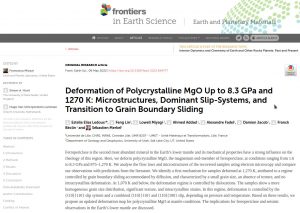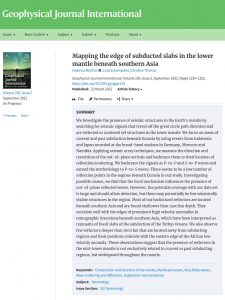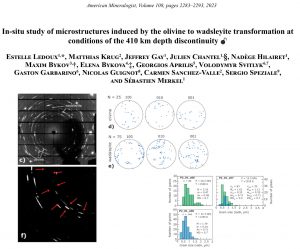 The TIMEleSS team has a new publication! In the December 2023 issue of American Mineralogist, former TIMEleSS student Estelle Ledoux present an In-situ study of microstructures induced by the olivine to wadsleyite transformation at conditions of the 410 km depth discontinuity.
The TIMEleSS team has a new publication! In the December 2023 issue of American Mineralogist, former TIMEleSS student Estelle Ledoux present an In-situ study of microstructures induced by the olivine to wadsleyite transformation at conditions of the 410 km depth discontinuity.
The olivine-wadsleyite transformation is believed to occur at depths of about 410 km in the Earth, producing a major seismic discontinuity in this region of the Earth’s mantle. The mechanism of this phase transition controls the microstructures of the newly nucleated wadsleyite, the major phase of the upper part of the mantle transition zone, and thus impacts seismic observations in the region.
In this work, we study the microstructures produced by the olivine-wadsleyite transformation using in situ laboratory experiments at pressures and temperatures relevant for the mantle transition zone and measure the orientation and size distribution of individual sample grains using multigrain crystallography at synchrotron radiation sources. We find that the olivine to wadsleyite transformation is incoherent at the conditions of the mantle transition zone, and is probably dominated by nucleation of wadsleyite at grain boundaries of the parent olivine.
Thus, we expect that seismic anisotropy near 410 km would drop significantly due to the randomized lattice preferred orientation of newly nucleated wadsleyite induced by the incoherent transformation.






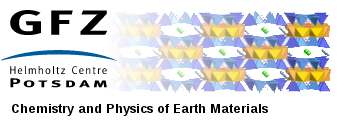



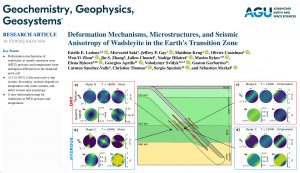
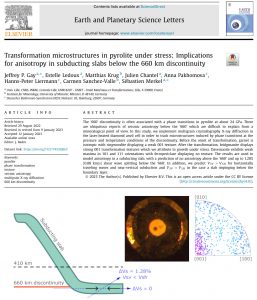 New year, and new publication for the TIMEleSS team! Former timeless PhD student Jeff Gay is the first author of
New year, and new publication for the TIMEleSS team! Former timeless PhD student Jeff Gay is the first author of 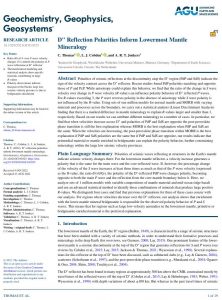 The TIMEleSS project has a new paper in September 2022! TIMEleSS PI C. Thomas is the first author of a publication entitled
The TIMEleSS project has a new paper in September 2022! TIMEleSS PI C. Thomas is the first author of a publication entitled 